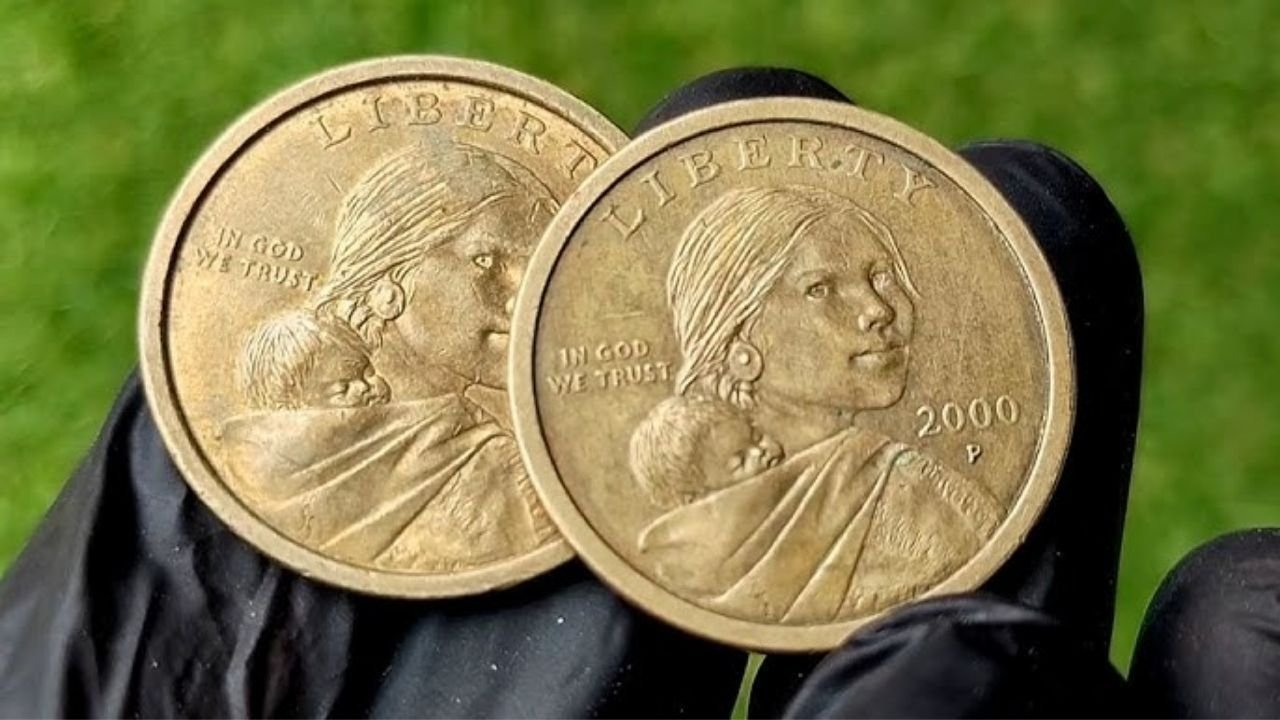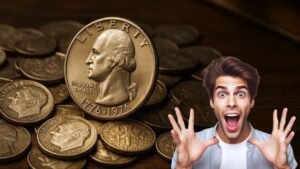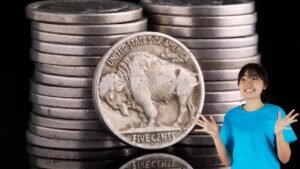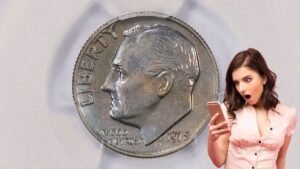Imagine sorting through coin rolls during a routine shift and spotting a coin that could be worth thousands of dollars. That’s exactly what happened when a bank teller discovered a rare Sacagawea dollar in everyday change. For collectors and hobbyists, this story proves that hidden treasures can appear in the most ordinary places.
What Is the Sacagawea Dollar?
The Sacagawea dollar was first minted in 2000 and is instantly recognizable for its golden hue, created with a manganese brass coating over a copper core. The obverse features Sacagawea, the Shoshone guide from the Lewis and Clark expedition, carrying her infant son, while the reverse originally depicted an eagle.
While most Sacagawea dollars are worth just $1, rare versions like the Cheerios edition or mint errors can fetch thousands, turning ordinary coins into prized collectibles.
The Origins of Rare Sacagawea Dollars
- In the late 1990s, the U.S. Mint wanted a new dollar coin to replace the unpopular Susan B. Anthony dollar.
- Artist Glenna Goodacre designed the obverse, while Thomas D. Rogers created the original eagle reverse.
- Over 767 million coins were minted in 2000, but a few special varieties emerged:
- 2000-P Cheerios Dollar: Only 5,500 were distributed in cereal boxes.
- Wounded Eagle Error: A die gouge resembling a spear on the reverse.
- Mule Error: A Sacagawea obverse struck on a quarter reverse; only 11 known examples exist.
These rare coins are highly sought after by collectors worldwide.
Why Rare Sacagawea Dollars Are Valuable
- Scarcity: Limited editions and mint errors are exceptionally rare.
- Condition: Coins in pristine, uncirculated condition fetch higher prices.
- Historical Significance: They honor Native American history and American exploration.
- Collector Demand: Interest in rare coins has grown with online auctions and coin shows.
A 2000-P Cheerios dollar can sell for $5,000–$30,000, while a 2000 Mule Error has reached over $100,000.
How to Spot a Rare Sacagawea Dollar
- Examine the Date and Reverse: Look for errors or special features.
- Check Tail Feathers: Early Cheerios coins have detailed eagle tail feathers.
- Look for Mint Errors: Off-center strikes or mismatched reverses indicate rarity.
- Preserve the Coin: Store in protective holders and avoid touching the surface.
- Professional Grading: Services like PCGS or NGC verify authenticity and grade condition.
Key Rare Sacagawea Dollar Varieties
| Variety | Mintage / Known Examples | Key Feature | Auction Value Range |
|---|---|---|---|
| 2000-P Cheerios | 5,500 | Detailed eagle tail feathers | $5,000 – $30,000 |
| 2000 Wounded Eagle | ~100 | Die gouge resembling a spear | $50 – $500 |
| 2000 Mule Error | 11 | Sacagawea obverse + quarter reverse | $50,000 – $100,000+ |
| 2000-P Regular | 767 million | Standard eagle reverse | $1 |
FAQs
Q: How rare are Sacagawea dollars in circulation?
A: True rare coins like errors appear in roughly 1 in millions of circulation coins.
Q: Which Sacagawea dollar is the most valuable?
A: The 2000 Mule Error, known for its mismatched reverse, can exceed $100,000.
Q: Can I find one in coin rolls today?
A: Yes, like the teller’s discovery, rare coins occasionally surface in banks.
Q: Are all golden dollars Sacagawea dollars?
A: Yes, but check the date and reverse for rare editions.
Q: Where should I sell a rare coin?
A: Auctions like Heritage, coin dealers, or certified online platforms ensure fair value.
Conclusion: Keep an Eye on Your Change
The bank teller’s discovery of a rare Sacagawea dollar proves that treasure can appear in the most mundane places. From the Cheerios edition to the elusive mule error, these coins connect us to history while offering real value. Next time you sort your coins or open a roll, inspect them carefully—you might uncover a golden gem waiting to change your fortune.



